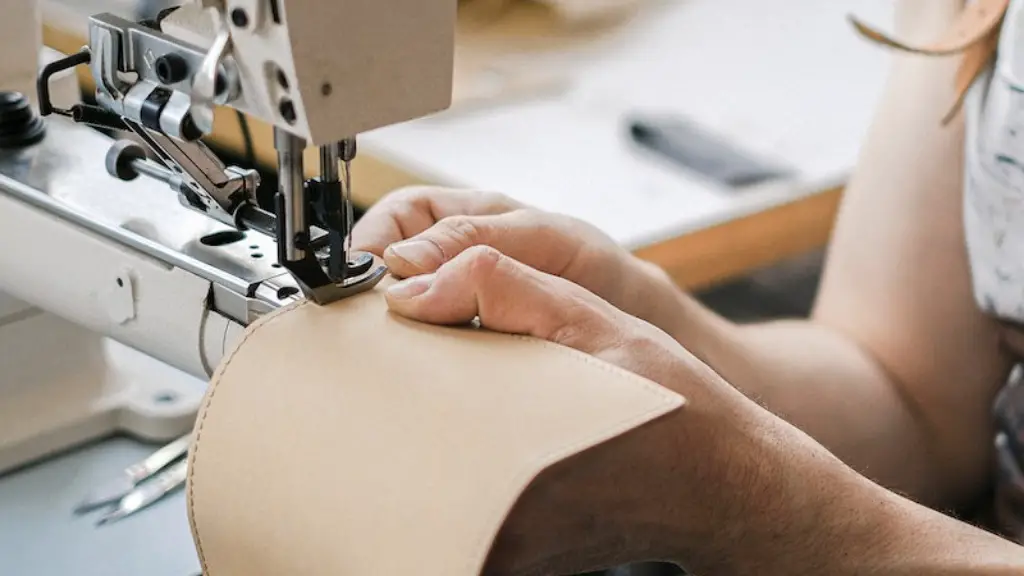Introduction to Retiming a Sewing Machine
Sewing machines are complex and delicate machines, requiring regular maintenance to keep in working order. In order to understand how to retime a sewing machine, it is helpful to understand what it means to retime a sewing machine. Retiming a sewing machine means to adjust the timing of the internal components to ensure they are working in unison and sewing accurate stitches. It is important to note that different types of sewing machines require different methods of retiming.
Reasons for Retiming a Sewing Machine
It is common for sewing machines to become misaligned over time due to normal wear and tear, changes in environment and even fabric types. When this misalignment occurs, it can cause the stitches to become uneven or the tension to be off. This can lead to regular broken threads, skipped stitches, and even damage to the fabric In addition, a machine that is out of time can be difficult to use and sewers may find themselves struggling to keep their projects looking professional.
Tools for Retiming a Sewing Machine
Retiming a sewing machine requires the use of specific tools, such as needles, screwdrivers, scrapers, and oil. Also, the sewing machine manual should be consulted to ensure the necessary adjustment steps are followed. Depending on the specific machine being serviced, additional tools may be needed.
Steps for Retiming a Sewing Machine
The first step in retiming a sewing machine is to unplug it and turn it off. Once it is powered off, the machine should be carefully inspected for any loose or broken parts. Any parts that need to be replaced should be immediately replaced, as a broken machine cannot be serviced properly. Next, it is important to carefully adjust the needle bar and tension disks. This step requires care and precision, as incorrect adjustments can cause further problems.
Testing the Sewing Machine
Once the components of the sewing machine have been adjusted, the machine should be tested to make sure it is in proper working order. It is important to note that the testing should be done on scrap fabric and not on a project. Sewing a line of stitches and examining the seam will confirm whether or not the machine has been retimed correctly.
Cleaning the Sewing Machine
It is important to clean the machine regularly to ensure it is running at its best. This means using a soft cloth and cleaning solution to wipe down all surfaces and remove any dirt and debris that can cause the machine to malfunction.
Regular Maintenance for the Sewing Machine
Regular maintenance of the sewing machine is vital for prolonged use and efficient sewing. This includes checking the tension and alignment, as well as changing oils and to avoid wear-and-tear of internal components. Furthermore, the needle should be regularly checked for wear and replaced when necessary.
Troubleshooting
Sewers should be aware of the most common sewing machine issues and how to troubleshoot them. This includes issues related to tension, thread, skipped stitches, and fabric feeding. All of these issues can be avoided with regular maintenance and retiming of the sewing machine.
Seeking Professional Assistance
For complicated retiming or repairs of the sewing machine, it is recommended to seek professional assistance. This is especially important when working with specialised or antique machines. A professional service technician will know the best way to handle the machine and ensure it is functioning properly.
Maintaining a Running Working Relationship With Your Sewing Machine
Regardless of the type or age of the sewing machine, forming a running, working relationship with the machine is key. Good maintenance, proper retiming and an understanding of the machine’s inner workings can increase its longevity and help keep sewing projects looking professional.
Safety Precautions When Retiming a Sewing Machine
It is important to take safety precautions when retiming a sewing machine, as some adjustments require the use of sharp tools, such as screwdrivers or sharps. To avoid serious injury or damage to the machine, wear gloves and use the appropriate tools. Furthermore, the area should be well lit and the machine should be away from any children present in the area.
Conclusion
Retiming a sewing machine is a delicate process that requires patience and attention to detail. This is not a job for amateur sewers as it is important to ensure all of the inner components are properly adjusted. Additionally, safety precautions should be taken at all times when retiming a sewing machine. With proper retiming and maintenance, sewing machines are sure to last a lifetime.



